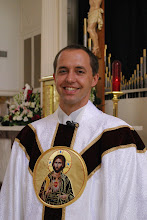
Info on Capernaum:
Capernaum was Jesus’ favorite city. “A prophet is without honor in his own country” was all too tragically true of Nazareth. Driven from there with hostility and threats of death, Jesus was fond of Capernaum on the Sea of Galilee. No more than we, could Jesus take rejection-much less callous indifference. He shook the dust of Nazareth from his sandals and went where people were open enough to listen to his words. The fact that the early Christians remembered such an insignificant spot as the home of Peter’s mother-in-law and erected upon it a church-synagogue shows that they too, after the destruction of Jerusalem, found this a hospitable town.

Synagogues were the centers for prayer and hearing the Word of God in each community. Sacrifice was limited to the Temple in Jerusalem, 75 miles away. Thus the synagogue was the focus of the spiritual life, except for the pilgrim feasts that brought one to Jerusalem. Never before had the citizens of Capernaum heard such words full of spirit and life. They came forth, not from written Torah scroll, but from the very word of God himself. They were the words that held out the hope and the promise of Eternal life. In the breaking of the bread, the Eucharist, we are offered life, life such as we could never have imagined or striven for. It is the very sharing in the life of Jesus himself. And because it is the flesh and blood of the Risen Lord, it is a foretaste of our own resurrection. The words that Jesus spoke at Capernaum, promising life eternal, are the words that come true each time we gather as a Christian community. We are the living fulfillment of his promise. Capernaum with its synagogue has fallen into ruins. His word endures forever, and because of what he said here, we shall live forever.
Historical Background: Similar to the other houses in Capernaum at the time of Jesus, Peter's Mother-in-Law’s house had one large room, measuring about twenty feet by twenty feet, and seveal smaller rooms. The walls of the house were built of black basalt stones, and the roof was made of clay and straw. This house was the place Jesus called "home" after leaving Nazareth (Mark 2:1; 3:19-20). Here Jesus returned at the end of each day, relaxed with his disciples, planned for the next day, talking with his friends into the night. Here, too, people came seeking Jesus-the sick, the possessed, and all who were in need (1:32-34). They knew they could find in Jesus a refreshing word, a healing touch, a saving presence. After the life of Jesus, the house of Peter’s Mother-in-Law became a gathering place for cel¬ebrating Eucharist among the early Christians. In the second half of the first century, the walls and ceilings of the large room of the house were plastered to create a church. On this plaster are etched writings from early pilgrims such as "Christ have mercy" and "Lord Jesus, help your servant." In the fifth century an eight-sided church was built around and over Peter's house. This octagonal style was popular in the Byzantine period, and allowed worship¬pers to form a procession around the holy site.
Today a modern church is built upon pillars over the ruins. In the center of the church, a glass floor allows visitors to look into the excavations below and stand directly above the place which Jesus called home. As pilgrims worship in this church, they are able to feel the life of Jesus as close as anywhere on earth.

No comments:
Post a Comment